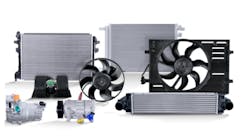Fuel economy, auto lightweighting powers demand for fibers, Frost & Sullivan says
Emphasis on sustainable architecture and consumer demand for comfort will propel the use of fibers in the global automotive sector.
With stringent fuel emission legislations compelling original equipment manufacturers (OEMs) to adopt lightweighting, the need for fibers is poised for rapid growth. In the long-term, next-generation telematics in vehicles will broaden the scope for smart textile fibers that can be integrated with electronics.
New analysis from Frost & Sullivan, “Strategic Analysis of the Global Fibers Market for the Automotive Sector,” finds that the market earned revenues of $2.46 billion in 2013 and estimates this to reach $4.02 billion in 2020. The study covers fibers for technical textile and composite applications.
"The automotive industry as well as external stakeholders such as governments have put into place several mechanisms to improve fuel economy in vehicles," said Frost & Sullivan Chemicals, Materials and Food Research Analyst Deepak Karthikeyan. "These initiatives are pushing OEMs to incorporate more lightweighting solutions in vehicles, thus fuelling the use of fiber reinforced composites as well as nonwoven materials."
However, OEMs' approach toward lightweighting has historically been multi-material centric. As design teams work simultaneously on various materials, including aluminum, high-strength steel magnesium and plastics for different parts of a vehicle, the usage of fiber-reinforced composite materials will take a hit.
Establishing cost optimization strategies to provide an effective price-performance quotient will significantly improve the penetration of fiber-reinforced composites in the automotive industry. Cost reduction in fiber-based composites can also be achieved through disruptive process innovation rather than just product innovation.
"Besides cost optimization, fiber companies must work on a multi-pronged strategy that includes a proactive merger and acquisition plan," advised Karthikeyan. "Strategic alliances through joint ventures, value chain partnerships and acquisitions will enable fiber manufacturers to widen their regional presence and march ahead of the competition."
For complimentary access to more information on this research, visit: http://bit.ly/1yrcgxf.
Subscribe to Aftermarket Business World and receive articles like this every month….absolutely free. Click here.


